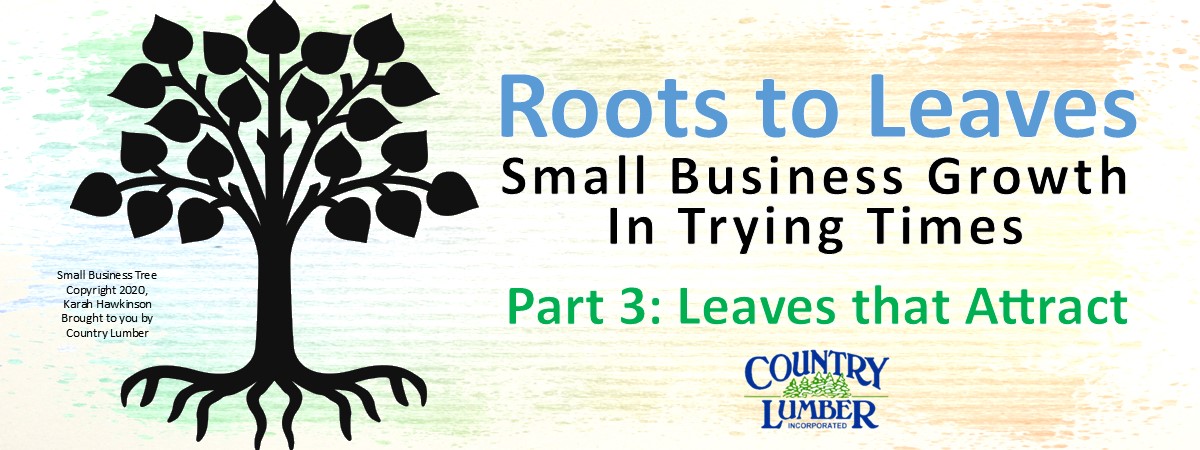Tag: Marketing
-

Roots to Leaves: Part Three – Leaves that Attract Energy
Welcome to day three of Roots to Leaves: Small Business Growth in Trying Times. Today I’m talking about leaves! When one looks at a tree (in season), the leaves are the first thing that get noticed (unless there’s something obviously wrong with the tree, but let’s assume our metaphorical tree and your small business are…